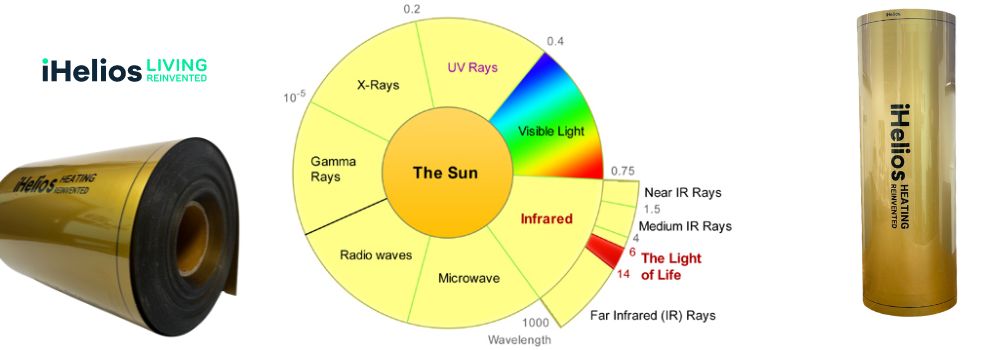
Understanding Infrared: Near, Mid, and Far-Infrared
Share
Types of Infrared Radiation
Infrared radiation differences is divided into three types: near-infrared, mid-infrared, and far-infrared. Each type has distinct characteristics and implications for safety and usage. Understanding is a key to choose best heating.
- Near-Infrared (NIR): Near-infrared has the shortest wavelength and highest frequency of the three types. This means it can excite atoms more intensely, which has the potential to cause burns. In fact, exposure to near-infrared radiation has been linked to retinal damage in the eyes.
- Mid-Infrared (MIR): This type of infrared falls between near and far-infrared in terms of wavelength and frequency. It has intermediate properties and uses, but it’s generally less discussed in terms of heating and safety compared to the other two types.
- Far-Infrared (FIR): Far-infrared has the longest wavelength and lowest frequency, making it the safest of the three. Known as the "light of life," far-infrared radiation is a significant part of the sun’s natural output, comprising about 49% of its infrared light. Far-infrared is not only safe but also highly beneficial for heating applications. It is widely used in incubators to warm newborn babies and in home heating systems.
Benefits of Far-Infrared Heating
Far-infrared heating is particularly advantageous for home heating. Unlike traditional heating methods that warm the air, far-infrared radiation heats surfaces and objects in a room. These surfaces and objects then gradually release the stored heat, providing a consistent and comfortable warmth. This method of heating offers several benefits:
- Energy Efficiency: Because far-infrared heating warms objects directly, the heating system can operate for shorter periods while still maintaining a comfortable temperature. This results in lower energy consumption and reduced utility bills.
- Comfort and Health: Far-infrared heating is more comfortable as it provides a consistent temperature and reduces drafts and dry air associated with conventional heating systems.
iHelios Far-Infrared Heating Film
Innovative and Safe Heating Solution
While not all far-infrared heating systems are created equal, the iHelios far-infrared heating film stands out for its innovative design and safety features. Traditional far-infrared panels can become extremely hot to the touch, posing a risk to children, elderly people, and pets. Additionally, these panels often create uneven heating, warming specific areas while leaving others cold.
The iHelios heating film addresses these issues by offering a safer, more efficient far-infrared heating solution. The key features of the iHelios heating film include:
-
Uniform Heating: iHelios heating films distribute heat evenly throughout the room, eliminating cold spots and ensuring a consistent temperature.
-
Safety: iHelios films are designed to remain at a safe temperature, even when touched. This makes them ideal for households with children and elderly residents.
-
Energy Efficiency: The system's efficient design allows for rapid heating and reduced energy consumption, leading to lower electricity bills and a smaller carbon footprint.
Conclusion
Far-infrared heating, particularly through advanced systems like iHelios, offers a superior alternative to traditional heating methods. By focusing on safety, efficiency, and comfort, the iHelios far-infrared heating film ensures a warm and welcoming home environment while also being mindful of energy use and environmental impact.





